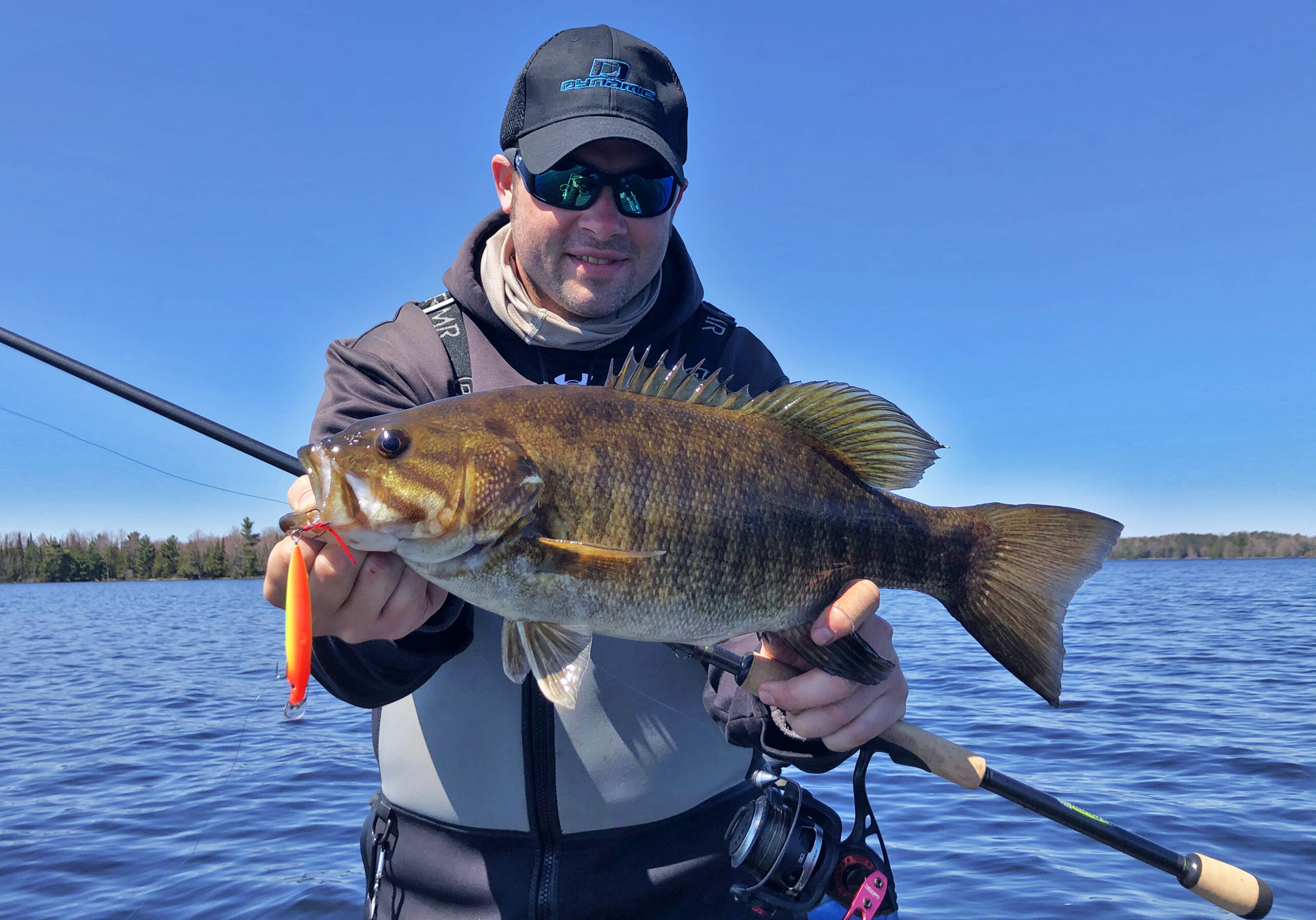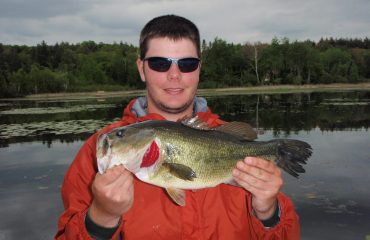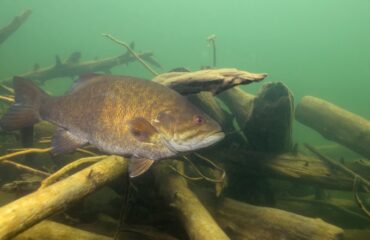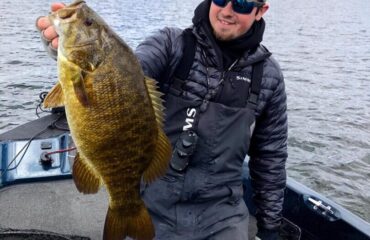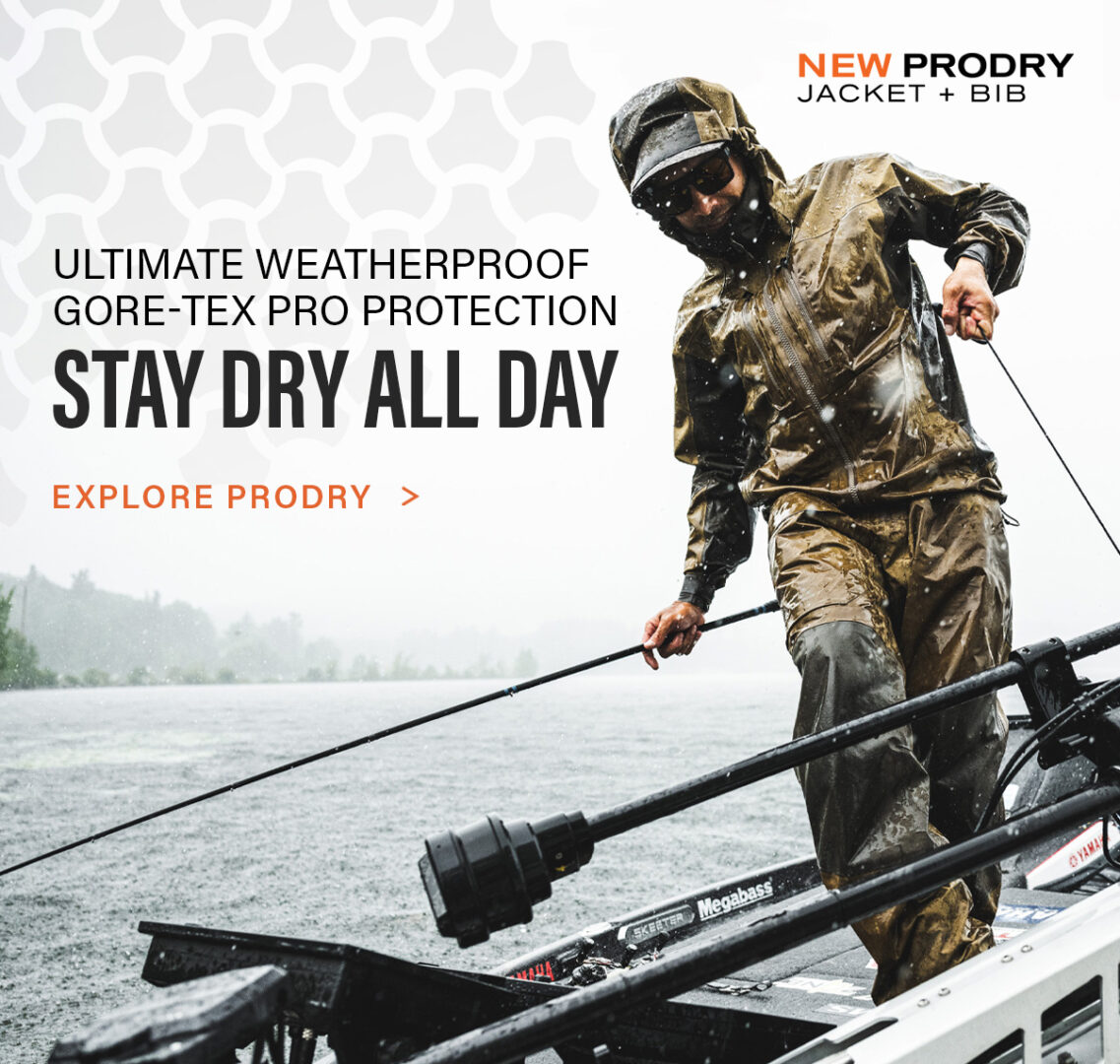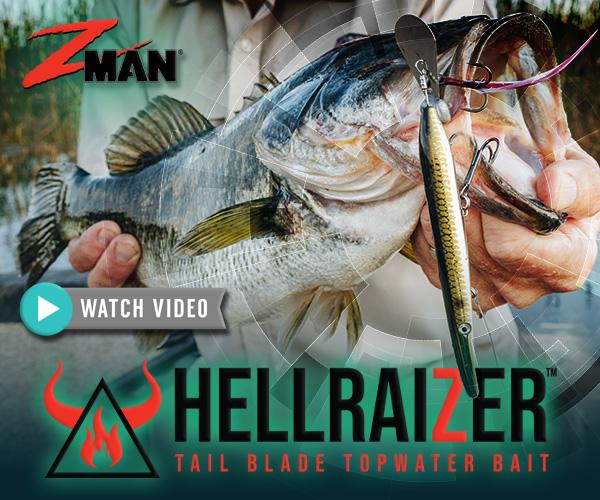Revisiting The Hot Head
By Andrew Ragas
Smallmouth bass are notorious for their peculiarity and curiosities. Oftentimes, they’ll sneak up on baits merely to check them out. With similar frequency, they will completely ignore everything altogether until you decipher what’ll get their attention. While other times, they will crush almost anything in sight. Anglers who are passionate about smallmouth bass fishing live for this form of excitement.
As an attention-getter, nothing else compares to the triggering powers and attraction of The Hot Head.
I grew up fishing many northwoods lakes with the X-Rap in Hot Head color. When first introduced in the early 2000’s, it was the hottest little lure for me. Then for a long while, it was neglected and forgotten. These last few seasons have been the re-birth of the Hot Head, in sizes 08 and 10. It continues to be a go-to for customers and I throughout the spring and summer seasons, domineering our smallmouth catch rates.
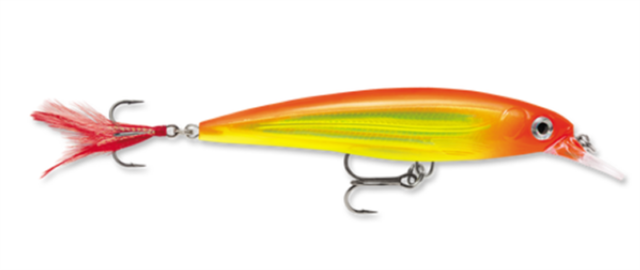
A Color Scheme for all Water Clarities
The Hot Head is perfect for northwoods smallmouth. It contrasts best on tannic brown waters, and is visible to fish from afar on the clearest waters. It’s the only X-Rap color one ever needs. Traditional wisdom suggests that the Hot Head should only be used in waters with reduced clarity. Instead, I break the rules of the bass fishing color barrier. Bright color schemes are attractors and enticers to smallmouth even in lakes with the highest visibility and transparency.
Constructed for accurate long distance casting, the X-Rap incorporates a long-cast design, enabling weights to shift mid-cast. Its weight-forward design is a benefit, enabling anglers to cover vast amounts of water quickly, making it an effective search bait whether seeking concentrated staging fish, or scattered pre-spawners. What separates this suspending jerk from most others is its comfortability. I can fish the size 08 all day without tiring with my favorite 7ft med. heavy St. Croix Avid-X spinning rod (AXS70MHF) and its high-speed Quantum Smoke 30 Speed Freak reel.
The XR08 is a good all-around size for catching both numbers and sizes of fish.
A key characteristic of the X-Rap is that it can be fished in any type of mannerism, reacting according to the moods and feeding patterns of the fish. This correlates with the retrieve of the X-Rap and the way it is fished as it involves a lot of trial and error to cater its cadence to the activity and behavior of fish.
Smallmouth bass that are situated in shallow and mid-depth ranges are known to be most aggressive and feeding, clearly exhibiting their competitive nature. Commonly feeding in wolf packs, these groupings tend to ambush and feed together, sometimes by the dozens. This behavior is most evident in spring. When hooked, it is a common occurrence to have multiple followers trailing behind, attempting to steal the bait.
Pre-spawn competition and aggression can be very high. When smallmouth are located in the shallows, and can be seen in the water feeding and traveling in their packs, the best X-Rap methodology is to be as aggressive and attention-seeking as possible.
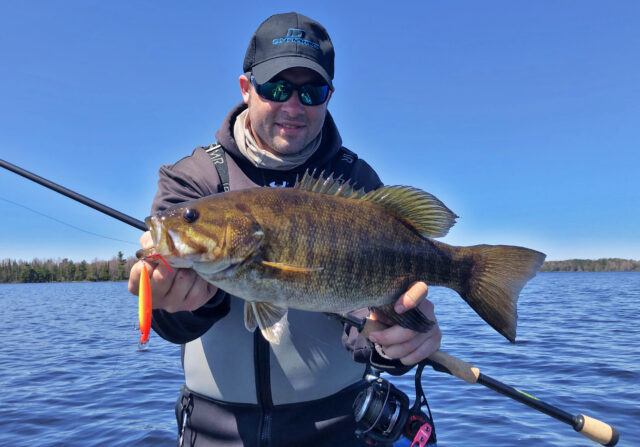
To best manipulate the baits, and fish all day in comfort without fatigue, it’s important to equip with a rod and reel that fits the system and is an extension of your wrist and hand.
Seduction in Spring
During spring movements, smallmouth will make frequent visits into shallower or deeper water if necessary. Therefore, it is important to make adjustments along the way in terms of boat positioning and casting angles. My Ranger with its Terrova will commonly spot lock into place, anchoring us along the outer edges of staging sites, and anywhere we’ve contacted hot spots congregating fish along flats.
We’ve had our best days of fishing using it as a search bait on the largest lakes and flowages. When targeting high-percentage locations and staging sites, it excels at structure fishing during moderately windy conditions. Follow the windblown shorelines and flats, working them through spawning bays, and position fishing nearby staging sites that’ll hold concentrations of fish. In spring, a warm west or southerly wind activates fish most. These winds are a Hot Head go-to.
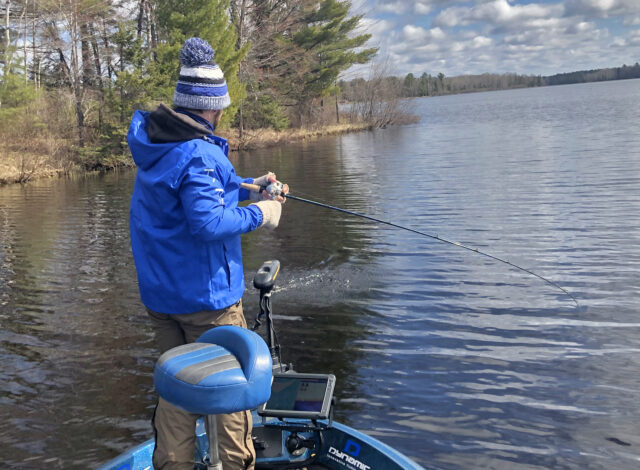
Joe Hofmann hammers down on a smallmouth from the first trip of the season. On a flowage fishery.
Success with the Hot Head is always dictated by the activity and aggression levels of fish. For instance, on days when smallmouth are active and striking everything in sight, I prefer retrieving the X-Rap with an hard, erratic wrist twitching and rod ripping motion. In this situation the rod tip is pointed down into the water where I’ll employ a rapid erratic rip-pull-rip motion through the water. After a series of 3 to 5 rips, I allow the lure to pause for a few seconds before resuming the motions again. Another tactic that works well is the sweep retrieve. This is similar to the hard twitching retrieve but instead of rapid erratic jerks I use longer, more powerful pulls with slightly longer pauses; again pointing the rod downward.
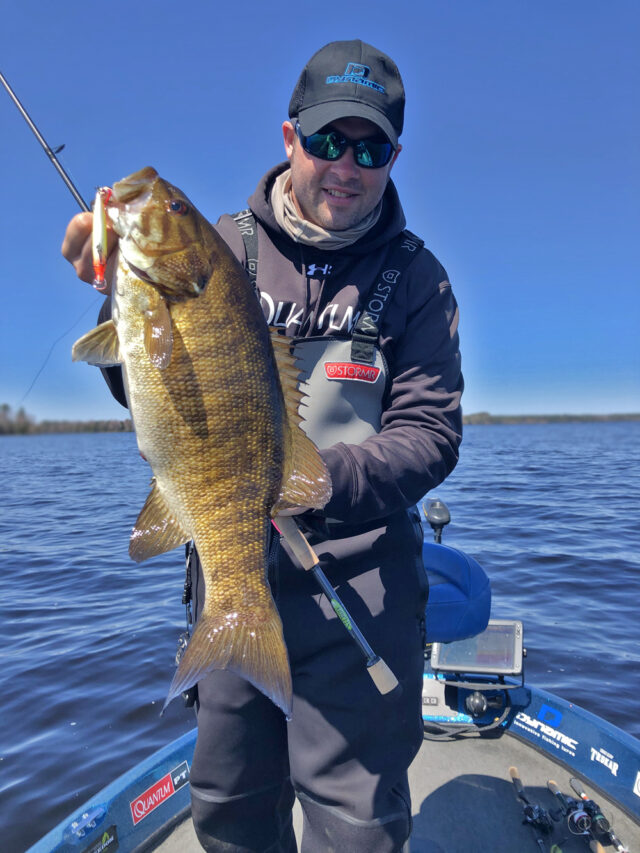
There is no wrong way to fish the hot head. It comes out to play when water temps reach 45 degs. When exploring new waters or covering vast acreage on lakes and flowages, it’s a top search bait.
9 times out of 10, smallmouth will strike on the pause. However long you choose to pause should be based on the considerations of water temperature and fish activity levels. I wait 1 to 5 seconds normally. Other times if water temperatures are still in the upper 40’s, or if combating a cold front, we’ll force ourselves to wait for as long as 15 to 20 seconds in between jerks. Last, the colder the water, the less aggression you’ll want to fish it with.
During adverse spring conditions, smallmouth will frequently slip back into their lazy, negative moods. These scenarios occur during cold fronts, crap cloud conditions, and early mornings when daily water temperatures are at their coldest. In these situations, I significantly slow down my rate of retrieve by making long casts coupled with long pauses, minimizing the jerk rate. Sometimes dead sticking the X-Rap is required to elicit strikes from fish. The colder the water, slow it down and fish with less aggression, longer pauses of several seconds, and test your patience.
There are many other great methodologies for fishing the X-Rap. However, the best is undoubtedly the one where a lure user can custom tailor a retrieve that’ll create a positive reaction from fish.
One last critical factor leading to successful X-Rapping is good vision into the water. It’s visually engaging fishing. When smallmouth are chasing and trailing from behind, most strikes will occur at boatside. You will need to see them. Most strikes also occur mid-retrieve. These strikes are frequently seen in the water through the aid of my polarized Costa sunglasses. Choosing the right lens type is imperative. I rely on my pairs of Reeftons, which I carry in both green mirror (for sunny days) and grey silver mirror (for overcast days) lenses. Whether fishing under the bright lights or in overcast conditions, a keen eye on the Hot Head will allow for rapid reaction on smallmouth every time they’re in sight. There is no question this attention to detail undoubtedly increases my catch rate.
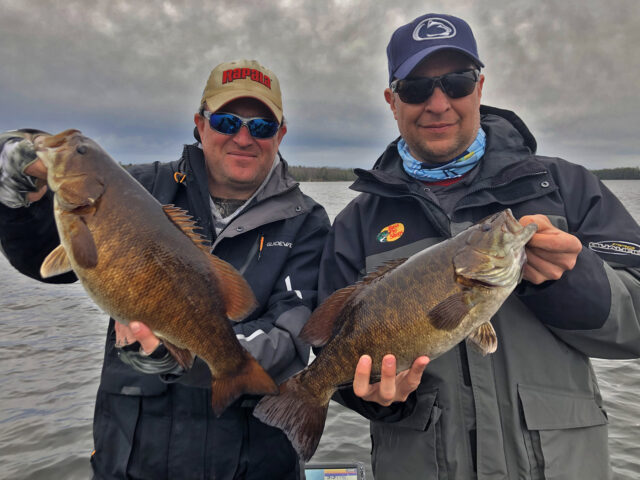
Northwoods Bass customers and friends, Bob DiLorenzo and Ron Bacza, tag teamed these 19″ and 20″ smallmouth with the Hot Head during their May 2020 trip. The Hot Head has been their go-to on each spring trip. Catching fish when most other baits cannot.
Braid, Fluoro, or Mono ?
Line choice is a frequent question I get asked.
Fish them however you can produce the maximum level of action and lure manipulation. With the size 08, my go-to is a 7ft medium heavy, fast action St. Croix Avid-X spinning rod paired with Quantum Smoke Speed Freak 30 spooled with 8 lb Cortland Line Camouflage mono.
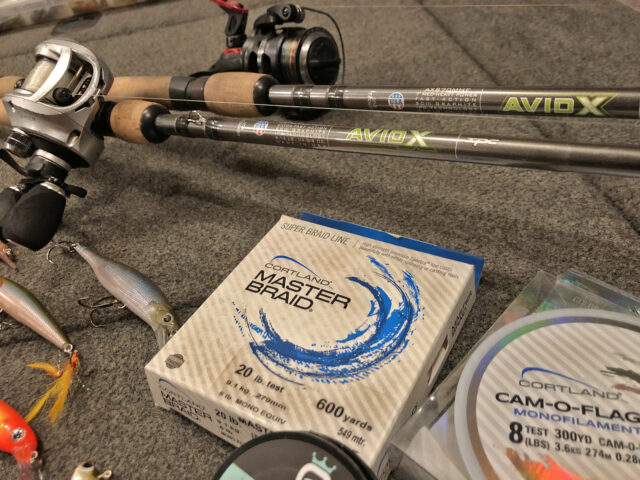
The author favors the St. Croix Avid-X casting and spinning rod. The SCIII blank provides necessary flex and taper for solid hook sets with the preferred monofilament and fluoro lines.
Archaic monofilament nowadays is a peculiar choice like smallmouth behavior, but I stick 99% of everything that strikes. My medium-heavy rod with its backbone and load requires the slight stretch of mono for shock absorption. On a normal retrieve, the XR8 will get down to 3 to 5 ft depths. With fluoro, slightly deeper. But the issue therein lies lack of line and cast control.
Traditional wisdom suggests that Hot Head should only be used in waters with reduced clarity. Unfortunately I break the rules of the bass fishing color barrier. Over the years I’ve learned that bright colors have little effect on the fish in lakes with the clearest water clarity. The erratic action of the retrieve along with its bright color actually attracts fish from a distance and entices them into striking more often than using something that looks more natural and matches the hatch.
Meanwhile with the size 10, I presently fish them with a 6ft 8″ medium extra-fast St. Croix Avid-X casting rod paired with a Quantum Icon PT with 6:3.1 gear ratio spooled with 10 lb. Seaguar Red Label fluorocarbon. Unlike the spinning set-up, the fluorocarbon main line can be controlled easily with the baitcasting reel’s line management and cast control. We prefer the XR10 when targeting big fish on big fish waters, but often revert back to the XR08 if these fish are pressured specimens.
I stress fishing the X-Rap with a rod, reel, and line choice that’ll provide the best feel, hook sets, and lure manipulation. The same can be accomplished with light braided lines with fluorocarbon leader attachments. To do so, you’ll want to settle for a medium fast action St. Croix spinning rod with SCIII modulus instead, such as the muscle-flexing and sensitive Avid-X, Mojo Bass, and new for 2021 Victory rods.
A word of warning on braided lines: I have witnessed too many large fish being lost and unhooked due to anglers using too stiff of rods, heavy lines, tight drag settings, and main line to leader knot failure.
The X-Rap family of baits comes with a pair of razor-sharp VMC trebles, but I recommend swapping them in favor of Trokar Tk300 round bend treble hooks. They’ll pin more fish for you, even with minimal hook-setting power. I presently keep about 20 freshly tuned Hot Heads in my boat at all times. You’ll want to consider the same too, especially when it comes to catching northwoods bass in spring.
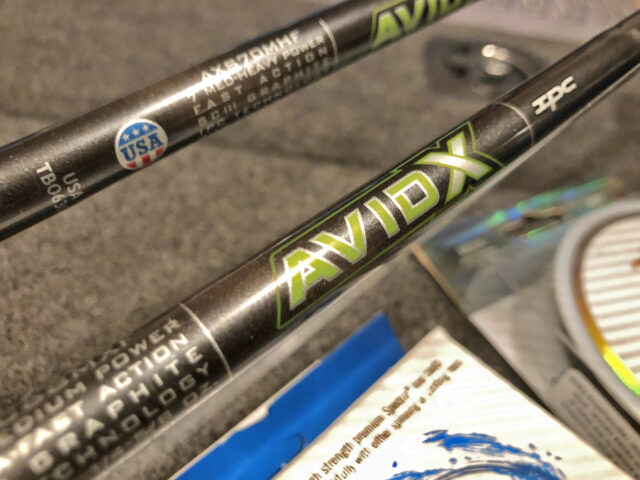
Keep One Tied On at All Times
Jerk-jerk-pause….. jerk-pause-jerk. The retrieve styles are endless and infinite. I’ve fished head-to-head against others in my boat by utilizing different color schemes and retrieves, yet casting at the same angles. Catering to the observed mood and behavior of fish will enable you to out-fish your peers. When fishing the Hot Head, presentation and vision is everything, and the way you approach the fish and adapt to their behaviors and interests truly makes a difference between success and failure.
Every spring smallmouth trip, and for much of the year, I always keep a St. Croix Rod rigged and ready with a size 8 or size 10 Hot Head.
For the last 15 years, northwoods bass have remained unconditioned to its superpowers. Bass anglers would be wise to fish the Hot Head, instead of being stubborn hot heads. Your spring smallmouth trips will never be the same again.
Andrew Ragas splits time between the Chicago area and Wisconsin’s Northwoods. Based in Minocqua, WI, he specializes in trophy bass fishing and offers guided trips from May thru October. While big bass is the passion, he dabbles in multi-species as well. He may be visited online at www.northwoodsbass.com


